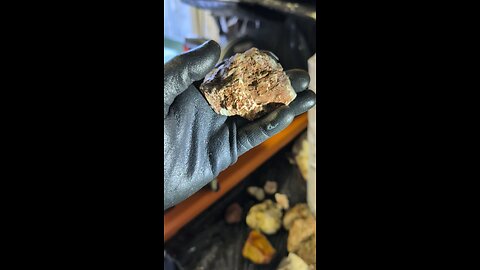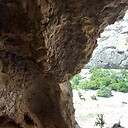
Schist!
1 video
Updated 8 months ago
Schist is a type of metamorphic rock characterized by its distinct foliation, which is a layered or banded appearance due to the alignment of platy or elongated minerals. Here's an in-depth exploration of schist:
Formation:
Metamorphism: Schist forms through the metamorphism of pre-existing rocks such as shale, mudstone, or basalt. This process involves heat and pressure, typically in the lower to middle grade of metamorphism where minerals begin to recrystallize but do not melt.
Conditions: It requires temperatures between about 300-600°C and pressures that correspond to depths of several kilometers within the Earth's crust.
Mineral Changes: During metamorphism, clay minerals in the parent rock recrystallize into mica (like muscovite and biotite), chlorite, and other minerals, giving schist its characteristic texture.
Characteristics:
Texture:
Foliation: The alignment of minerals creates a schistosity, where the rock splits into thin layers or sheets.
Grain Size: While the matrix might include fine grains, schist can also contain larger, visible crystals or porphyroblasts.
Composition: Common minerals include micas, quartz, feldspar, garnet, staurolite, kyanite, or sillimanite, depending on the chemistry of the parent rock and the intensity of metamorphism.
Color: Varies widely based on mineral content; it can be silver, gray, green, brown, or even black.
Types:
Mica Schist: Rich in mica, giving it a shiny appearance.
Garnet Schist: Contains garnet crystals, often visible to the naked eye.
Chlorite Schist: Dominated by chlorite, usually green in color.
Graphite Schist: Contains graphite, giving it a dark, sometimes lustrous look.
Uses:
Construction: Historically used for building stones, particularly in regions where it's abundant. However, due to its tendency to split along foliation planes, it's less common for load-bearing uses.
Decorative: Schist can be used for flagstones, wall cladding, or landscaping where its natural, layered look is desired.
Cultural and Artistic: Some types of schist are used for sculptures or gravestones due to their aesthetic qualities and workability.
Geological Studies: Schist provides valuable information about metamorphic processes, tectonic history, and past geological conditions.
Considerations:
Durability: Schist can be durable but its foliation makes it prone to splitting, which impacts its use in construction unless specifically oriented to mitigate this.
Weathering: Its resistance to weathering varies; some schists can be quite resistant, while others might be more susceptible to chemical weathering due to their mineral content.
Geotechnical: In engineering, schist's foliation must be considered in construction projects to avoid issues with stability or water infiltration.
Schist's distinctive layered texture and mineral composition make it both a geological interest and a material with some practical applications, though its use is often dictated by its physical properties and the local availability.
-
A river runs through it!
 HumbleConservativeBased on the image, the rock appears to have a layered structure with a mix of colors, predominantly gray with some yellowish-brown areas. This suggests it could be a type of banded iron formation or possibly a metamorphic rock like slate or schist. Banded iron formations are known for their alternating layers of iron oxides and silica or chert, while slate and schist are metamorphic rocks that can show similar banding due to the alignment of minerals under pressure and heat.55 views
HumbleConservativeBased on the image, the rock appears to have a layered structure with a mix of colors, predominantly gray with some yellowish-brown areas. This suggests it could be a type of banded iron formation or possibly a metamorphic rock like slate or schist. Banded iron formations are known for their alternating layers of iron oxides and silica or chert, while slate and schist are metamorphic rocks that can show similar banding due to the alignment of minerals under pressure and heat.55 views